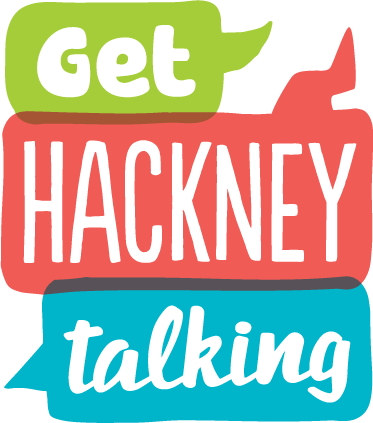 The 22nd October is International Stammering Awareness Day. In Hackney we are marking this with our new stammering poster, designed to raise awareness and referrals to support children and young people who stammer. Click here to see our new poster which has details about how to refer to our service.
The 22nd October is International Stammering Awareness Day. In Hackney we are marking this with our new stammering poster, designed to raise awareness and referrals to support children and young people who stammer. Click here to see our new poster which has details about how to refer to our service.
Stammering, stuttering, dysfluency? They all mean the same thing, and are used to describe:
- repeated speech sounds e.g. “b-b-b-b-because”
- repeated whole words e.g. “the-the-the-ball is red”
- prolonged or lengthened sounds e.g. “yyyyyyyesterday I went shopping”
- blocked sounds, where no sound comes out of the mouth when a person is trying to speak
A person who has a stammer may also experience muscle tensions in their face and body, disrupted breathing and reduced eye contact as a result of their stammer.
We know that stammering occurs across the world, cultures and socio-economic groups. The statistics tell us that around 5% of children will have difficulty with their fluency. This reduces to 1% of the adult population, which means that most children become fluent with or without help.
In younger children, nearly the same amount of girls and boys stammer. This changes as children get older, where we see around 4 boys to every girl who stammers. This means it is more likely that boys will need continued support with their fluency compared to girls as they get older.
There is always a lot of research being carried out, into the causes of stammering. Currently it is thought that 4 factors are linked to the possible causes:
- Physical e.g. genetics, family history, brain structure, development
- Speech and language skills
- Personality of the child/young person
- Environment e.g. school pressures
We know many famous people who stammer; people who have dysfluent speech and experience exciting achievements, such as Ed Sheeran, Samuel L-Jackson, Bruce Willis, Ed Balls and Tiger Woods.
It is widely recognised that experiencing a stammer is more than the disruption to the spoken language that can be heard. People who stammer can live in fear of speaking, which can affect how much they join in with learning and socialising.
A Speech and Language Therapist can carry out an in depth assessment of language and communication skills. They can then work with the young person, their family and school to identify strategies and make sure that all elements of their speech and communication are supported.
For more information, visit http://gethackneytalking.co.uk/, http://www.stammeringcentre.org, https://www.stammering.org
Written By Gemma Creek, Highly Specialist Speech and Language Therapist


